TV Station NHK
 The Mark of Beauty | Yosegi-Zaiku Marquetry
The Mark of Beauty | Yosegi-Zaiku Marquetry
DC331107![]()
美の壷 | 寄木細工 [NHK]
![]()
![]()
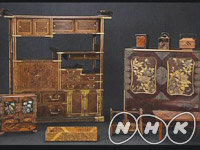
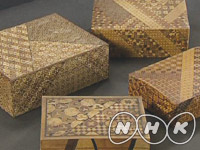
|Length : 29min. |Year : 2011 |
One of Japan's traditional wood crafts, Yosegi-zaiku marquetry combines wood pieces of a wide range of colors and shapes to produce gorgeous designs to decorate desks and boxes. This art spread throughout Japan in the 18th century. For puzzle boxes, many unique pictures are hidden in the patterns, and the boxes themselves are fitted with fascinating mechanisms.Japanese marquetry attracted Western people from the latter half of the 19th century, and marquetry craftsmen, combining the wood pieces with sprinkled picture, produced exquisite gems of art.
 The Mark of Beauty | Tops
The Mark of Beauty | Tops
DC330906![]()
美の壷 | 独楽 [NHK]
![]()
![]()
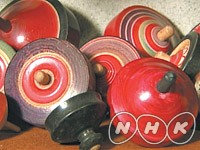
|Length : 25min. |Year : 2009 |
Tops: standing straight up, they spin in an orderly manner. Although tops are one of the many old familiar toys children used to play with 50 years ago, they have also been regarded as lucky charms and used in dramatic performances since ancient times. And with their bright colors, some can also be considered works of art that go beyond the realm of toys. They are the result of the finest skills of craftsmen who infuse these precious toys with local flavor and beauty. This episode delves into the fascinating world of tops.
 The Mark of Beauty | Clockwork Dolls
The Mark of Beauty | Clockwork Dolls
DC330905![]()
美の壷 | からくり人形 [NHK]
![]()
![]()
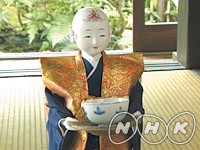
|Length : 25min. |Year : 2009 |
Robots existed since the Edo period (1603-1867), or so to speak. They are clockwork dolls. Displaying sophisticated movements and realistic facial features, they are unique dolls which artisans of the Edo period created using the latest technologies of the time. Some carry tea, while others can skillfully use an ink brush. Based on an elaborate mechanism, these dolls are as real as real can be. This episode introduces clockwork dolls that fully reveal the genius ideas of master artisans.
 The Mark of Beauty | Folding Fans
The Mark of Beauty | Folding Fans
DC330904![]()
美の壷 | 扇子 [NHK]
![]()
![]()
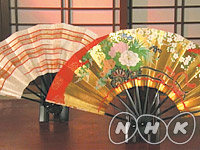
|Length : 25min. |Year : 2009 |
Folding fans have long been used as a tool to keep cool but also as a fine piece of ornament. First introduced around 1,200 years ago in the ancient capital of Kyoto, the original folding fans were said to have been created by binding thin strips of Japanese cypress. The surface, its most important aspect, was embellished with beautiful and elegant paintings produced by artists of the time. These were used by aristocrats in ritual ceremonies and were highly valued ornaments. Japanese folding fans were also extremely popular among European aristocrats in the 18th century.
 The Mark of Beauty | Wagashi (Japanese-style sweets)
The Mark of Beauty | Wagashi (Japanese-style sweets)
DC330803![]()
美の壷 | 和菓子 [NHK]
![]()
![]()
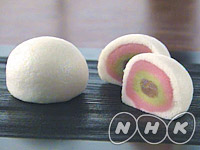
|Length : 25min. |Year : 2008 |
"Wagashi", or Japanese-style sweets appeared frequently in old Japanese literature.
Various types of wagashi were created, symbolizing each season, and each sweet told a variety of stories. Wagashi gained popularity in the 17th century, during the Edo Period. Each wagashi was given a name and elaborately crafted with a design worthy of its name. This trend expanded the world of wagashi.
This program introduces viewers about the true way of enjoying a wagashi, that is, to enjoy not only its taste, but also the intention of the maker and the hospitality of the person serving it.














